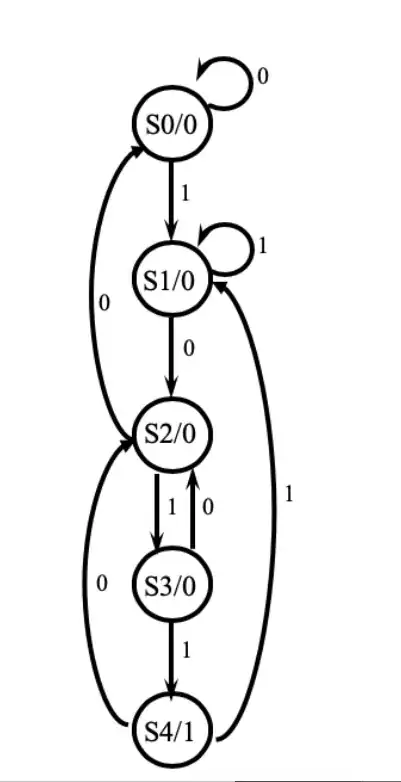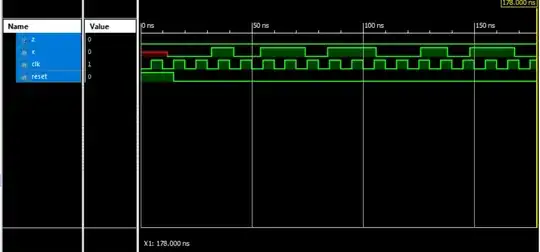I'm designing a "1011" overlapping sequence detector, using Moore Model in Verilog .
The FSM that I am trying to implement is as shown below :-
Verilog Module :-
`timescale 1ns / 1ps
module seq_detector(
input x,clk,reset,
output reg z
);
parameter S0 = 0 , S1 = 1 , S2 = 2 , S3 = 3 , S4 = 4;
reg [1:0] PS,NS ;
always@(posedge clk or posedge reset)
begin
if(reset)
PS <= S0;
else
PS <= NS ;
end
always@(PS or x)
begin
case(PS)
S0 : begin
z <= 0 ;
NS <= x ? S1 : S0 ;
$display(PS);
end
S1 : begin
z <= 0 ;
NS <= x ? S1 : S2 ;
$display(PS);
end
S2 : begin
z <= 0 ;
NS <= x ? S3 : S0 ;
$display(PS);
end
S3 : begin
z <= 0;
NS <= x ? S4 : S2 ;
$display(PS);
end
S4 : begin
z <= 1;
NS <= x ? S1 : S2 ;
$display(PS);
end
endcase
end
endmodule
Testbench :-
`timescale 1ns / 1ps
module testbench;
// Inputs
reg x;
reg clk;
reg reset;
// Outputs
wire z;
// Instantiate the Unit Under Test (UUT)
seq_detector uut (
.x(x),
.clk(clk),
.reset(reset),
.z(z)
);
initial
begin
clk = 1'b0;
reset = 1'b1;
#15 reset = 1'b0;
end
always #5 clk = ~ clk;
initial begin
#12 x = 0;#10 x = 0 ; #10 x = 1 ; #10 x = 0 ;
#12 x = 1;#10 x = 1 ; #10 x = 0 ; #10 x = 1 ;
#12 x = 1;#10 x = 0 ; #10 x = 0 ; #10 x = 1 ;
#12 x = 0;#10 x = 1 ; #10 x = 1 ; #10 x = 0 ;
#10 $finish;
end
endmodule
The issue is that, the output 'z' is staying low always, even when I've applied an input sequence which has three '1011' patterns in it . What's the possible modification that I'd have to do, so as to eliminate this error ?


